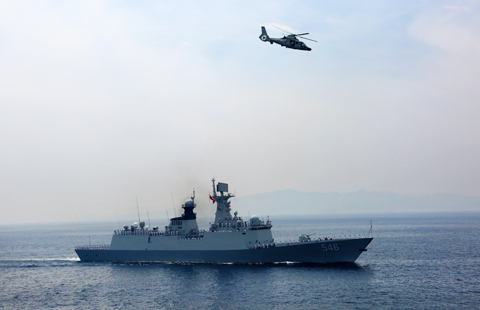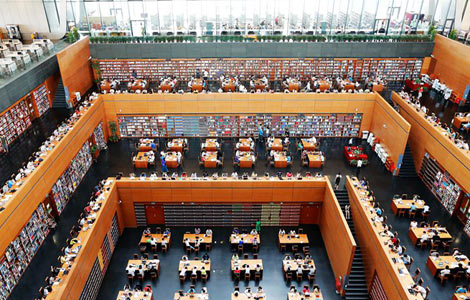Vessels of culture
Updated: 2014-12-24 07:33
By Wang Kaihao(China Daily)
|
|||||||||||
An exhibition at the Palace Museum reveals rare artifacts from ancient China's international porcelain trade. Wang Kaihao looks at how they connect the country to the world.
Ancient Chinese porcelain bearing European families' emblems are a rare sight - especially those created in styles otherwise not found in the country. The ongoing exhibition, Treasure of the Trade: Ming-Qing Export Porcelain from Shanghai Museum and the Palace Museum, offers visitors to Beijing's Palace Museum a glimpse into ancient China's international porcelain trade - a massive historical industry about which little is known.
On show are 106 pieces from the two museums, 81 of which are from the Shanghai Museum. The show will run until March 15 and later go to Shanghai.
Most exhibits from the Ming Dynasty (1368-1644) were exported to Japan, and southeastern and southwestern Asia, and are diverse in appearance, Ancient Chinese Porcelain Society chairman and Palace Museum researcher Geng Baochang says.
Most from the Qing Dynasty (1644-1911) were customized for European buyers, who then dominated the East India Company.
"China has traded porcelain since the Tang Dynasty (AD 618-907) and has continued to influence production," Geng says.
The rise of Guangdong, Fujian and Jiangxi provinces as porcelain hubs has largely relied on international business, he explains.
Related Stories
Chinese calligraphy exhibition opens at UN headquarters 2014-12-19 17:03
Photo exhibition on Maritime Silk Road opens at UN headquarters 2014-12-17 17:32
'New Silk Road' ceramic art exhibition held in Greece 2014-12-17 09:37
Pastry Paradise exhibition opens in London 2014-12-11 09:10
Chinese-Russian Exhibition of Winter Landscapes opens in Vladivostok 2014-12-10 17:36
Today's Top News
Ukraine peace talks may be held in Minsk
Ling Jihua probed for disciplinary violations
Pyongyang denies cyberattack on Sony
China to become net capital exporter
Beijing willing to assist Moscow
Australian PM denies cabinet reshuffle sign of desperation
Obama vows again to close Guantanamo prison
China revises 2013 GDP up by 3.4%
Hot Topics
Lunar probe , China growth forecasts, Emission rules get tougher, China seen through 'colored lens', International board,
Editor's Picks

|

|

|

|

|

|





